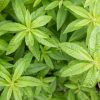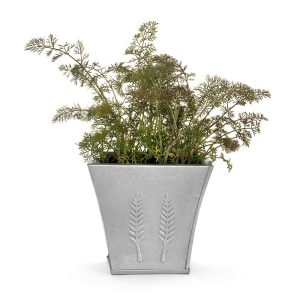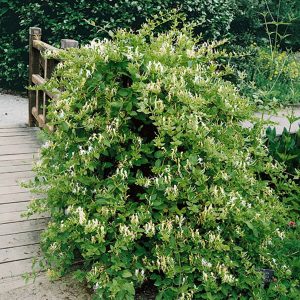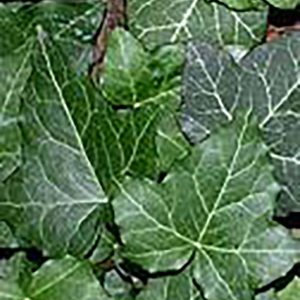Description
Commonly known as lemon verbena as well as often being referred to as Aloysia citriodora, which means lemon scented Aloysia, it’s name comes from the lemony scent that is produced when it’s leaves are bruised. It is widely used as a herb and can be used in marinades as well as to make a herbal tea. It is evergreen in its natural range but will start to lose its leaves in temperatures under 0 degrees Celsius. The woody structures of the plant are typically hardy up to around -10 degrees, so it is less tender once established.
Key Facts
- Common Name(s):Lemon Verbena
- Hardiness:Half hardy and would benefit from protection through Winter.
- How big will I get? Aloysia triphylla can grow to a height of 2.5m and a spread of 1m.
- Did You Know That:Lemon verbena is commonly used it pot pourri when dried?
Plant Calendar
A rough guide to how this plant will change through the year.
| Jan | Feb | Mar | Apr | May | June | July | Aug | Sept | Oct | Nov | Dec | |
| Flowering Time |  
|  
| ||||||||||
| Foliage Colour |  |
 |
 |
 |
 |
 |
 |
 |
 |
| J | F | M | A | M | J | J | A | S | O | N | D |
 
|  
| ||||||||||
 |
 |
 |
 |
 |
 |
 |
 |
 |
Care Guide

Soil Requirements
Aloysia triphylla prefers soil with good drainage and does not tolerate standing water. This plant can grow in soil with a wide range of pH levels, it is not picky about the pH level of the soil.

Best Position
Aloysia triphylla prefers a sheltered position and requires full sun to thrive, this consists of more than six hours of direct sunshine per day.

Maintenance
Aloysia triphyllaCut back hard in early Spring, to within one or two side shoots of the plant’s woody base. This will encourage plenty of new growth through Spring and early Summer.

Pest, Diseases and Wildlife
Aloysia triphylla is generally pest free, and it tends not to have problems with diseases. It is also known to attract bees, butterflies and other pollinators. It is not considered to be toxic.
![Aloysia triphylla [Lemon Verbena]](https://leafwise.co.uk/wp-content/uploads/2022/10/Aloysia-triphylla-Lemon-Verbena.jpg)




